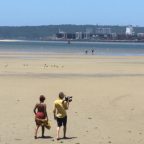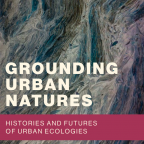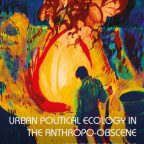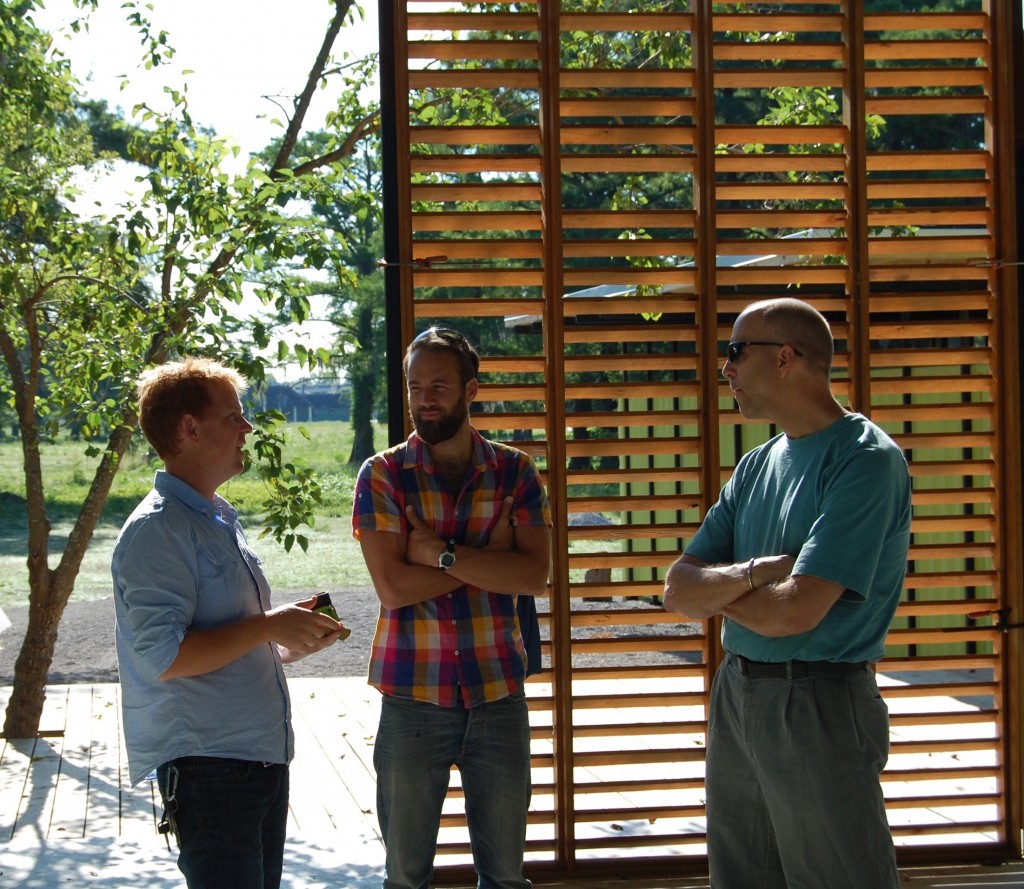
MOVE team members in New Orleans. Photo by Joshua Lewis.
Two other MOVE-related publications are also ongoing.
- Joshua Lewis and I are re-submitting to Progress in Planning, his extensive historical analysis of infrastructures and ecosystem dynamics in New Orleans and how they feed into political disputes in the Louisiana coastal ecosystems.
- Together with Sverker Sörlin at KTH I have also just submitted the Grounding Urban Natures book to MIT Press. This edited volume is now out on review and contains excellent chapters that critically analyses urban environmental politics and histories across cities of the world. Joshua Lewis has one chapter in this volume, and I have three with bearing on the MOVE project. Other chapters are from leading scholars from anthropology, geography and environmental history (read more here).
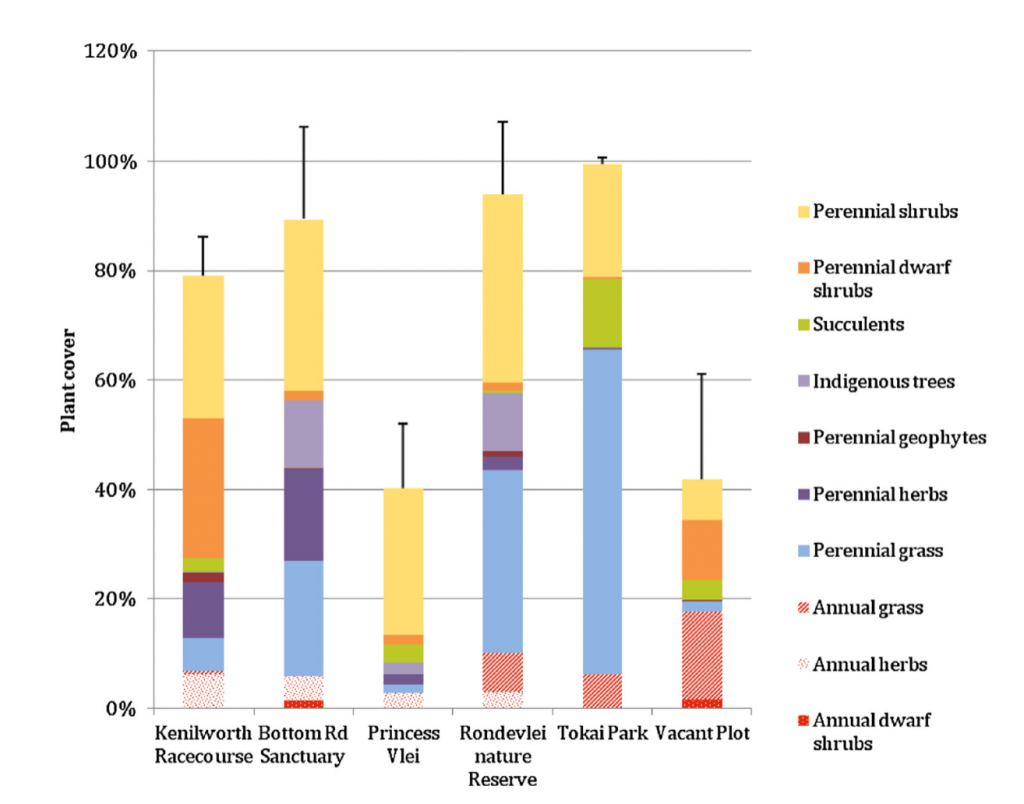
Figure from earlier publication by Pippin Anderson, Georgina Avlonitis and Henrik Ernstson based on work in the MOVE project.
Papers with abstracts
Abstract. Despite growing interest in urban resilience, remarkably little is known about vegetation dynamics in the aftermath of a major urban flooding. In this study, we examined the composition and structure of plant communities across New Orleans (Louisiana, USA) following catastrophic flooding triggered by levee failures during Hurricane Katrina in 2005. Focusing on eight neighborhoods that span a range of demographic and topographical conditions, we assessed whether plant communities in post-Katrina New Orleans reflect flooding disturbance and post-disaster landscape management policies. We then contextualized vegetation patterns and associated ecosystem services and disservices with census-based demographic trends and in-depth interviews to draw inferences about the drivers and outcomes of urban land abandonment in the aftermath of catastrophic disaster. We found that areas subject to the greatest flooding disturbance exhibit the highest rates of vegetation response. Disturbance intensity and elevation, however, are relatively weak drivers of vegetation differences among the studied neighborhoods. Rather, we found that household income, racial demographics, and land abandonment intensity are important drivers of vegetation community composition and structure across the city following Hurricane Katrina. Our findings indicate that resettlement and landscape management policies can mediate post-flooding ecological outcomes, and further that unmanaged, emergent vegetation on abandoned lands can be an environmental justice concern in underserved communities.
Abstract. In this study we explore species richness and traits across two urban gradients in the City of Cape Town. The first is across the natural-urban boundary and the second is across a socio- economic gradient informed by historical race-based apartheid planning. Plant species and cover were recorded in 156 plots sampled from conservation areas, private gardens, and public open green space. The socio-economic gradient transitioned from wealthier, predominantly white neighbourhoods to poorer predominantly black neighbourhoods, and ultimately in to poor informal settlements. The socio-economic gradient was selected to fall within one original vegetation type to ensure a consistent original biophysical template. There is a marked shift between the natural and urban plant communities in the City of Cape Town, with little structural and functional affinity. Urban landscapes are predominantly grasslands, with little structural and functional diversity when compared to the natural counterpart. A significant ecological gradient of reduced biodiversity, traits, and in turn functionality, was found across the socio-economic gradient. Wealthier and racially more white communities in Cape Town benefit from more private green space, more public green space, and a greater ecological diversity. Poorer, and majority Black and so-called Coloured, communities have limited green space on all fronts, and what is there, is ecologically ‘poor’. This ecological poverty mirrors historical apartheid planning that is resistant to change. Recent linkages between ecosystem properties, diversity and functionality, ecosystem services and vulnerabilities, suggests a significant environmental injustice persists in the City of Cape Town.
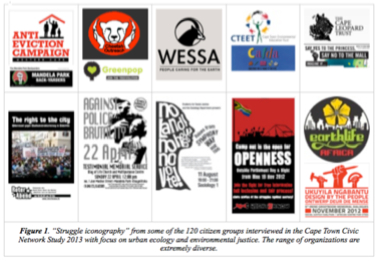
Iconography from civil society organisations that are mobilising on the urban environment in Cape Town and that participated in the CIVNET study as part of MOVE.
Abstract. This paper proposes a network analytic approach to the role of symbols in shaping the structure of civic organizational fields. More specifically, it looks at the expression “Right to the city” (RTC) both as a specific symbol and as a broader frame, and explores its influence over the patterns of collaborative ties among 129 civil society organizations active in Cape Town from 2012 to 2014. The article addresses two broad questions: What is the relation between RTC and other symbols that are also frequently invoked to describe urban struggles and issues? Do RTC symbols affect the structure of urban civic organizational fields in significant ways? The analysis suggests that while RTC plays a significant role in local civil society, it is not the only interpretative frame that Capetonian civic organizations draw upon to characterize their activity. “Urban conservation”, especially tied to nature conservation and environmental issues, shapes the structure of local organizational fields in a more salient, if possibly more divisive, manner.
Hanna Erixon Aaltoa, Henrik Ernstson
